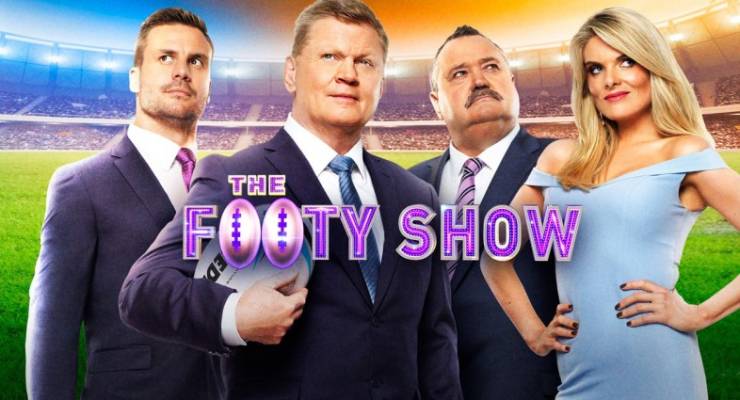
Australian sport, especially NRL and AFL, is becoming more and more numbers-driven. Tackles, distances run, tries, goals, kicks, handballs, contested marks, line breaks, height, weight, speed — you name it — are measured and plotted in the course of a season. It’s the difference between winning and losing. TV is just as numbers-driven and has been thus for much longer than sport — since soon after ratings began measuring performance.
In the end, in TV, ratings (and the demographics of the viewing audience) end up making the decisions. On Tuesday it was the 25 year old NRL Footy Show’s turn to be brought down by numbers. Nine says it is replacing the NRL show with two programs that will run after the NRL games on Thursday and Friday. The NRL show was already sort of doing that this year after the Thursday night NRL game, but the format was fiddled with, the personnel changed.
Nine knew the NRL show and its AFL counterpart, the AFL Footy Show, were in trouble when it started combing the two programs under the same ratings coding. In previous years, and especially for the grand final shows, the two shows had separate codings, meaning you could see the number of viewers for each show.
Because of Nine’s lack of confidence in the ratings for the NRL show, its figures were buried in the data and hard to extract and present precisely. But the rough indication was that at best the NRL show’s audience for the final episode (and centrepiece program of the year) collapsed — from 460,000 in 2017 to less than half of that this year. In Sydney and Brisbane, the two biggest NRL markets, the combined audience fell from 285,000 in 2017 to just 129,000 a week ago. Not having a Queensland team in this year’s grand final undoubtedly hurt the ratings.
As Crikey pointed out on Monday, the TV audience for the NRL grand final was the lowest for 10 years. So while the tired, old, blokey format of party tricks certainly would have played a part in the NRL Footy Show’s decline, the gradual, overall loss of interest in the NRL also contributed. Nine management was slow to pick up on this. They revamped the show at the start of the season, but didn’t do enough work to settle it down into a consistent format.
Production values were weak and it wasn’t until they started getting more involvement from old stars such as Gus Gould, Wally Lewis, Andrew Johns and Brad Fittler that the show started to become interesting. That was action that should have been taken three years ago. Importantly, the NRL Footy Show did not have a real rival, and that allowed Nine’s managements to arrogantly take viewers for granted rather than take action to refresh the program.
Take a look at the numbers: the NRL show saw a 32% slide in total people in 12 months (from 197,000 in 2017 to 133,000 this year). There was a 28% slump in Sydney and a rather nasty 39% slide in Brisbane. Among women, the slide was larger — 41% — and even in the core male groups, the drop was 26%. It’s no wonder Nine pulled out the axe yesterday.
Will we see something similar with the AFL Footy Show? In 2017, The AFL show averaged 293,000 against rival The Front Bar’s 222,000 (in Melbourne, Adelaide and Perth, the three main AFL metro markets). This year, the AFL Footy Show’s audience fell in those three markets to an average of 231,000 (down 21%) with the Melbourne audience (the AFL heartland) falling to just 161,000 — a drop of 20%. The Front Bar’s audience rose to 312,000 — a rise of 90,000, or 40%.
The reality is that Nine should really be lopping both the Footy Shows and starting again. Eddie McGuire and his production team have run out of ideas. Perhaps the only way Nine can give itself a chance is to poach Mick Molloy, host of The Front Bar, and some of the production team from Seven, swallow their pride, and take a step back.








Jims daughter has’nt helped the ratings much either,i know that Dad is pretty rhick with channel Nine management and got her in,but she has the same radical far right views as her old man and a lot of viewers did’nt like it
Then again every thing that the right touches these days turns to shit,whether it is politics or footy shows!
I don’t know anything at all about her politics but from the poster above, I imagine she wants not to be thought of as the eye candy of the show?
the borishly blokey sam newman is the prime reason I suspect that the AFL version of the footy show will be dropped, not many women could watch that show, not any with any dignity or self respect anyhow.